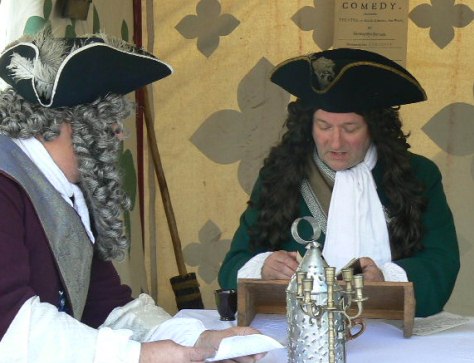Talk of coffeehouses today, and we think of those chains of cafes run by companies such as Costa Coffee, Starbucks and Caffè Nero, serving a wide range of teas, coffees, smoothies and snacks.
But these are not a modern phenomenon.
In 17th and 18th century England, coffeehouses were also popular places for people from all walks of life to go and meet, chat, gossip and have fun, whilst enjoying the latest fashion, a drink newly arrived in Europe from Turkey – coffee.
Whilst the taste of 17th century coffee was not very palatable – indeed, it tasted quite disgusting according to accounts of the time – the caffeine in it and the ‘buzz’ it provided, proved quite addictive.
The first coffeehouse in England was opened in Oxford in 1652. In London, the first one was opened later that same year in at St Michael’s Alley, Cornhill, by an eccentric Greek named Pasqua Roseé. Soon they were commonplace.
The new coffeehouses became fashionable places for the chattering classes to meet, conduct business, gossip, exchange ideas and debate the news of the day. Unlike public houses, no alcohol was served and women were excluded. Each coffeehouse had a particular clientele, usually defined by occupation, interest or attitude, such as Tories and Whigs, traders and merchants, poets and authors, and men of fashion and leisure.

Papers and pamphlets littered the tables in an re-enactors 18th century coffee house
Polite conversation led to reasoned and sober debate on matters of politics, science, literature and poetry, commerce and religion, so much so that London coffeehouses became known as ‘penny universities’, as that was the price of a cup of coffee. Influential patrons included Samuel Pepys, John Dryden, Alexander Pope and Isaac Newton.
However not all coffeehouses hosted such highbrow clientele: some were haunts for criminals, scoundrels and pimps.
Anyone of any social class could frequent the coffeehouses, and so they became associated with equality and republicanism. So much so that in 1675 an attempt to ban them was made by Charles II, which caused such a public outcry that it was withdrawn.
Several great British institutions can trace their roots back to these humble coffeehouses.
The London Stock Exchange had its beginnings in Jonathan’s Coffee House in 1698 where gentlemen met to set stock and commodity prices. Auctions in salesrooms attached to coffee houses were the beginnings of the great auction houses of Sotheby’s and Christies. Lloyd’s of London had its origins in Lloyds Coffee House on Lombard Street, run by Edward Lloyd, where merchants, shippers and underwriters of ship insurance met to do business.
By 1739, there were over 550 coffeehouses in London. However the coffee house fell out of favour towards the end of the 18th century as the new fashion for tea replaced coffee. They gave way to, and largely influenced, the exclusive gentleman’s club of the late 18th century.
Revived in the Victorian era and run by the Temperance Movement, coffeehouses were set up as alternatives to public houses where the working classes could meet and socialise.
However it wasn’t until the late 20th century that coffeehouses were ‘re-invented’ by companies such as Starbucks, Coffee Republic and Costa Coffee – although who knows what 18th century gentlemen would have made of skinny lattes, cappuccinos and espressos!
Published: 2nd May 2015







